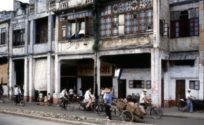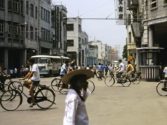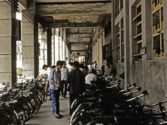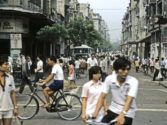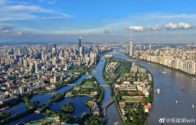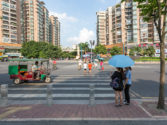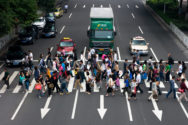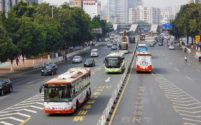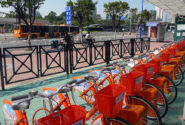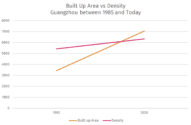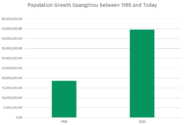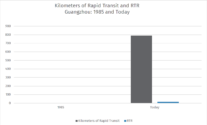
April 15, 2020
Guangzhou: 1985 and Today
On the Anniversary of ITDP’s 35th Year, Transport Matters will be publishing a series of articles about cities that ITDP has worked in, comparing them from 1985 and today. The article in full can be found in the Sustainable Transport Magazine. Read previous articles about Buenos Aires here, Chennai here, Rio de Janeiro here, Dar es Salaam here, and Mexico City here.
The explosive, transformative growth of Chinese cities over the past 35 years is difficult to overstate. Take the city of Guangzhou, on the Pearl River Delta, just north of Hong Kong and Shenzhen. In 1985, the population was 2.36 million. Ten years later, it had doubled to 5.04 million, and doubled again in another ten years, with an 11.7 million population in 2015. Today, Guangzhou is one of China’s biggest cities, with an urban population of 13 million.
The history of Guangzhou, formerly known by foreigners as Canton, dates beyond 2000 years before Guangzhou was a major port on the maritime Silk Road. Today, it continues to be a major port and transportation hub for the Pearl River Delta, which is the most populous region of mainland China. Guangzhou has long benefitted from this location, as its municipal borders expanded to include new municipalities. In 1985, Guangzhou, as in much of China, urban transportation was dominated by bicycles. The past few decades have seen a steady stream of car-oriented development, with new roads, elevated highways, and bridges built only for cars. As a result, Guangzhou and other Chinese cities are confronting public health crises of both air quality and road safety, and regularly sees epic traffic jams on its 20+ lane highways that stretch for days, or longer.
Guangzhou Before
Click below photos to enlarge
Fortunately, Guangzhou’s public transit system has grown along with its population. The ITDP and partner designed GBRT, which opened in 2010, and by 2011 was serving a million people per day on one corridor, making it one of the highest capacity BRTs in the world. Guangzhou also has an extensive metro system, serving eight million per day on 14 lines. It is this rapid expansion that has allowed Guangzhou to continue growing and remain economically competitive as traffic congestion worsens.
In 2011, Guangzhou won the Sustainable Transport Award as well as the United Nations Framework Convention on Climate Change’s Beacon Award, among others for its work on its BRT and other initiatives. Since the bike share program was launched along the BRT Corridor in 2011, cycling has returned to China in a big way. Today, Guangzhou has multiple bike share options, from city-run and docked to dockless, and thanks to a commitment to street redesign under the ITDP-cowritten Guangzhou Complete Street Design Manual, more and more streets have better walkability and bikability since 2017. In 2020, Guangzhou is continuing to improve its streetscape, has embraced bus electrification, and is turning away from decades of car-oriented and towards sustainable transport.
Guangzhou Today
Click below photos to enlarge
Guangzhou in Numbers
Looking at data and various metrics allows one to see very clearly just how much Guangzhou has grown and in what ways. Metrics were employed looking at population, density, and transit. Growth in built-up area and density both increased in a relatively similar rate, leading to a continuity of the use of space. In these figures, kilometers of rapid transit are defined as rapid transit that meets the definition of BRT basics in the BRT Standard, in Guangzhou in 1985 there was no public transport that fit the definition for rapid transit. One of the most useful metrics in studying transit in cities is the Rapid Transit to Resident Ratio (RTR) which compares the population with the length of rapid transit lines – this number shows how well a population is served by rapid transit. In Guangzhou, the explosion of rapid transit has led to a boom in RTR.






